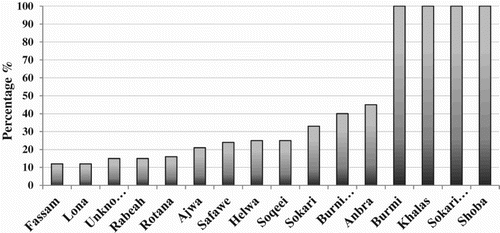Figures & data
Figure 1. Location of sampling. Map of Al-Madinah provenance divided into three sectors; Al-Madinah city, Suburbs and governorate. The black triangles showing the locations of infected farms found in the area. The topography of the western side of the city and suburbs is mountainous and no date palm farms are found in these areas.
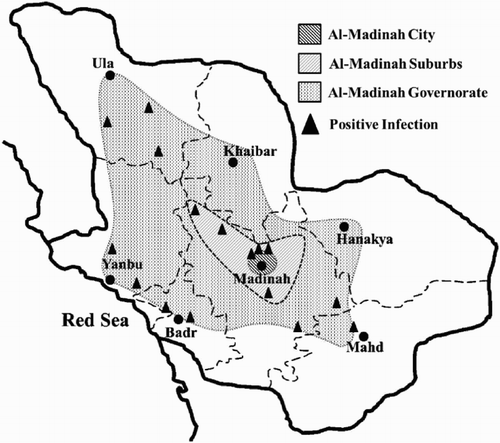
Figure 2. Symptoms of date palm phytoplamsa infection. (A) Date palm showing mild yellowing symptoms, (D) pale yellow streaks on leaves. (B) Date palm showing medium yellowing symptoms, (E) yellow streaks shown on leaf. (C) Date palm showing sever yellowing and leaf stunting symptoms, (F) the yellow streaks on leaves of severely diseased date palm.
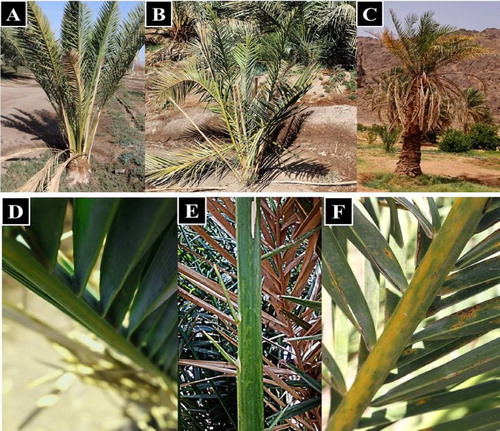
Figure 3. Gel electrophoresis of nested PCR of primers fU5/rU3. Positive nPCR product of 880 bp is shown. +ve: positive control, −ve: healthy control, c1 to c6: randomly selected samples collected from city farms, s1 to s5: randomly selected samples collected from suburb farms, g 1 to g6: randomly selected samples collected from governorate farms, M: 1Kb DNA marker (Invitrogen™, USA)

Figure 4. Phylogenic tree of related date palm phytoplasma in Saudi Arabia. The sequenced nPCR product, submitted to genebank (KY622126) was blasted against all available sequences through the online “blastn” tool on http://ncbi.nlm.gov website for identification. The sequence is aligned with the five reported phytoplasma sequences found in Saudi Arabia. Acholeplasma palmae was used as the outgroups to root the phylogenetic tree. The current 16S rDNA sequence (KY622126) is 98 and 99% similar to 16SrI group found in the eastern provenance and 88% similar to the 16SrII date palm phytoplasmas found in Alkharj, Rhiyadh and Qassim regions.
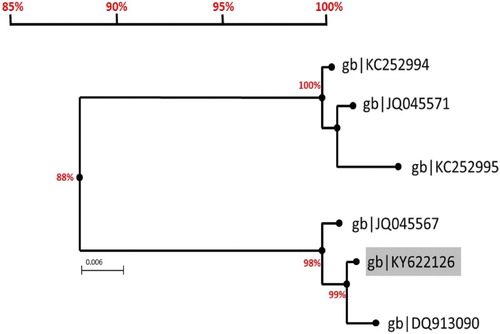
Figure 5. Dot-blot hybridization using AlkPhos direct labelling. Eight to ten blotted sample DNA, on Nylone membranes, from each farm (containing the date palm cultivars) are hybridized with the phytoplasma 16S rDNA probe. Developed films (1–7) were scanned and analysed according to their respective order of blotting.
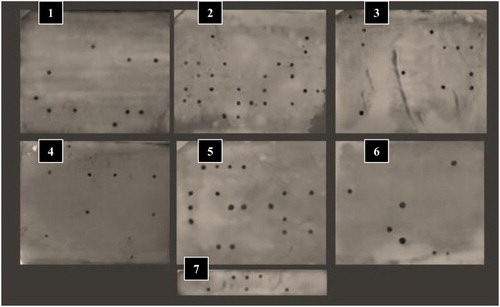
Table 1. Distribution of infection.
Figure 6. Percentage of infection in cultivated date palm cultivars. Al-Madinah date palm cultivars that showed positive hybridization to phytoplasma 16S rDNA probe, the percentage is calculated by the number of hybridization-positive samples over total number of cultivar samples from all locations.
